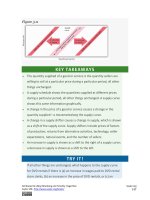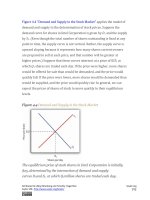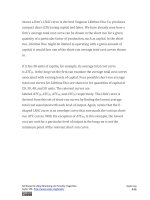Authors libby rittenberg 55
Bạn đang xem bản rút gọn của tài liệu. Xem và tải ngay bản đầy đủ của tài liệu tại đây (383.23 KB, 1 trang )
capital. Natural resources are the resources of nature that can be used for
the production of goods and services.
In the next three sections, we will take a closer look at the factors of
production we use to produce the goods and services we consume. The
three basic building blocks of labor, capital, and natural resources may be
used in different ways to produce different goods and services, but they
still lie at the core of production. We will then look at the roles played by
technology and entrepreneurs in putting these factors of production to
work. As economists began to grapple with the problems of scarcity,
choice, and opportunity cost two centuries ago, they focused on these
concepts, just as they are likely to do two centuries hence.
Labor
Labor is human effort that can be applied to production. People who work
to repair tires, pilot airplanes, teach children, or enforce laws are all part of
the economy’s labor. People who would like to work but have not found
employment—who are unemployed—are also considered part of the labor
available to the economy.
In some contexts, it is useful to distinguish two forms of labor. The first is
the human equivalent of a natural resource. It is the natural ability an
untrained, uneducated person brings to a particular production process.
But most workers bring far more. The skills a worker has as a result of
education, training, or experience that can be used in production are
called human capital. Students who are attending a college or university
are acquiring human capital. Workers who are gaining skills through
Attributed to Libby Rittenberg and Timothy Tregarthen
Saylor URL: />
Saylor.org
55









